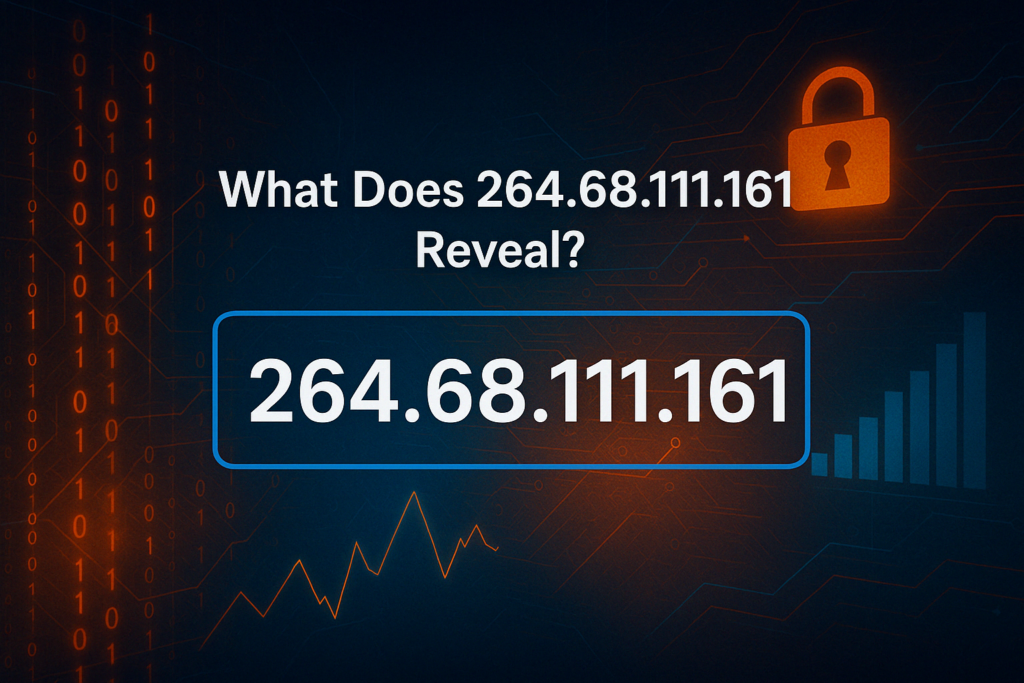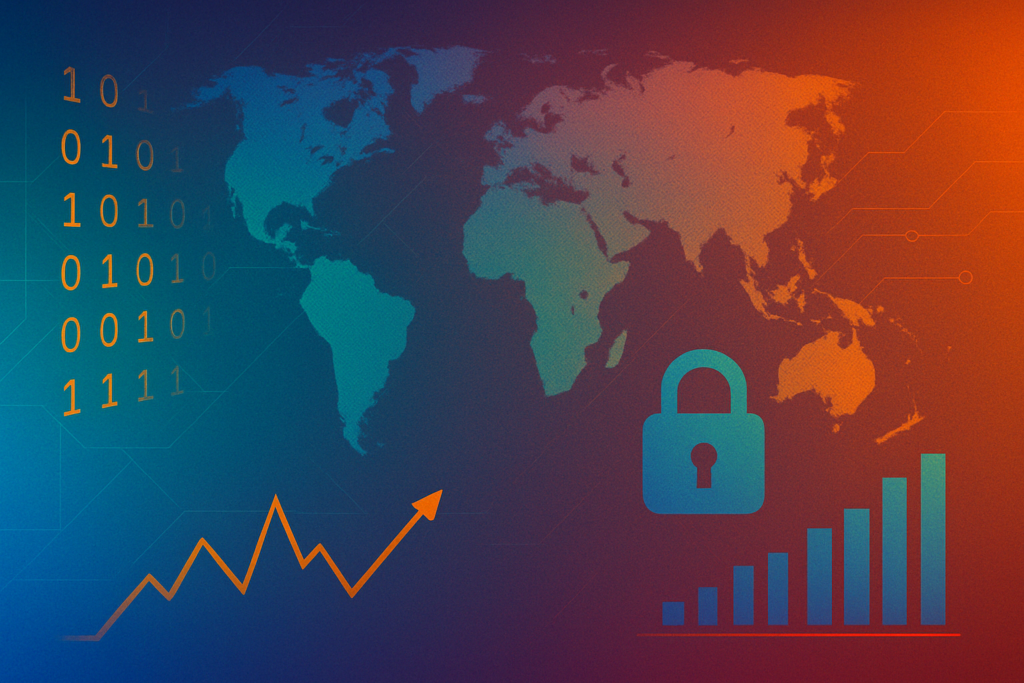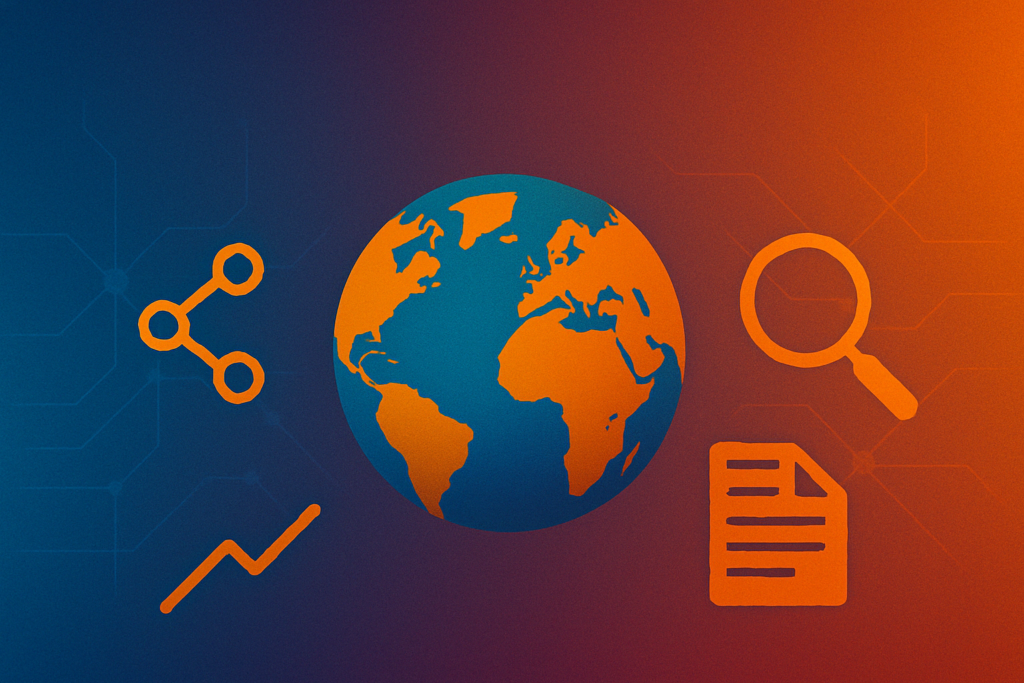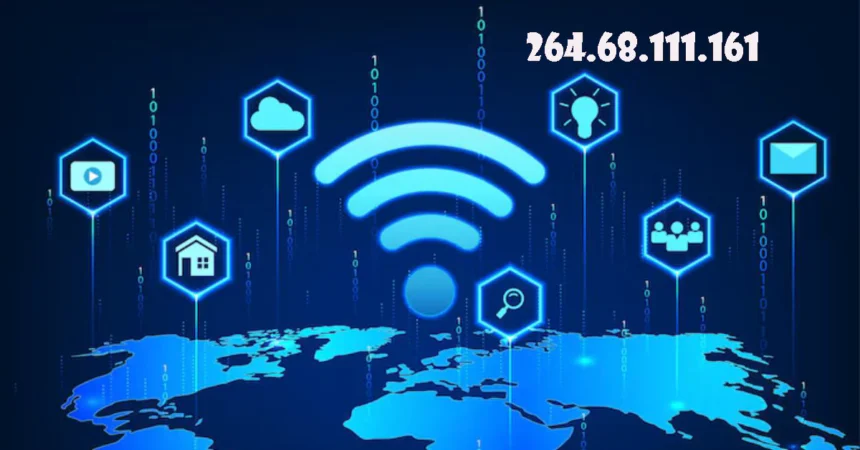The IP address 264.68.111.161 has recently appeared in various network logs, raising curiosity and concern among users and analysts. Whether it’s a harmless visitor or a suspicious connection, knowing more about this IP is important.
Many devices connect to the internet using public IPs like 264.68.111.161, which help identify their location and activity. This specific address may belong to a server, bot, or even a cloud-based system.
If you’ve noticed 26468.111.161 in your firewall reports or traffic monitor, it’s worth tracing its origin. Understanding where it comes from can help protect your system from unknown access.
In this article, we’ll explore the background, technical behavior, and potential risks related to 26468.111.161, making it easier for both beginners and IT professionals to respond properly.
264.68.111.161 in Network Logs: What It Might Reveal
Every time a device connects to your server or network, it leaves behind an IP address. If you see 264.68.111.161 in your logs, that’s a clue. This specific IP might represent a remote server, a user, or even an automated bot trying to access your system.
Network logs are like a digital diary. They record who came in, what they did, and when they left. If this IP appears frequently, you should look deeper.
Sometimes, unusual IPs are a sign of scanning attempts or probing activities. They may not be harmful at first glance, but tracking them helps prevent bigger issues.
It’s smart to set alerts for unknown IPs in your firewall or intrusion detection system. This way, if 264.68.111.161 tries something strange, you’ll be notified.
Logs not only help identify threats but also provide evidence if something goes wrong.
Tracing IP Address 264.68.111.161: Tools and Techniques
Tracing an IP like 264.68.111.161 is easier than ever with online tools. Just enter the IP into services like IPinfo.io, Whois Lookup, or AbuseIPDB. These sites return data about location, ISP, and ownership.
If the IP belongs to a hosting company, you’ll often see names like Amazon, Google Cloud, or OVH. If it’s a personal ISP, it may show a city and home broadband provider.
Advanced tools like Wireshark or built-in command-line functions like traceroute and ping can also help track how the IP connects to your system.
For cybersecurity teams, combining IP tracking with DNS lookup and port scanning helps get a full picture. This can show if 264.68.111.161 is running a website, app, or simply probing systems.
Don’t forget to check IP reputation databases to see if others have flagged it.
Understanding the Role of IPs in Digital Forensics
IP addresses like 264.68.111.161 play a crucial role in digital crime investigations. When a hacker breaches a system, the IP they use becomes one of the first breadcrumbs for forensic experts.
Digital forensics involves collecting, analyzing, and presenting digital evidence. IP logs are used to trace the source of attacks, thefts, or breaches.
Even when cybercriminals try to hide behind VPNs or proxies, investigators often uncover patterns or previous behaviors linked to the IP range.
Courts accept IP-related evidence, especially if it shows repeated connections, timestamps, and malicious intent.
This is why companies are advised to retain their log data — it could help track down the truth when something goes wrong.
Is 264.68.111.161 Associated with Suspicious Activity?
To know if 264.68.111.161 is safe or dangerous, you can use public threat intelligence platforms. Sites like VirusTotal and AbuseIPDB show community feedback and reports.
If someone has flagged this IP for spam, malware distribution, or hacking attempts, you’ll find it there. This helps organizations decide if they need to block or monitor it.
Suspicious behavior includes high login failure rates, scanning ports, or sending junk data. Even if the IP is not directly harmful, repeated failed access attempts are cause for concern.
You can also use geo-restrictions to block IPs from high-risk countries or regions. This adds an extra layer of defense.
Always treat unknown IPs with caution, especially if they reach your backend servers or admin pages.
How Dynamic and Static IPs Work in Daily Networking
Not all IPs are the same. 264.68.111.161 might be a static IP — meaning it stays the same every time a device connects — or it could be dynamic, changing with each connection.
Dynamic IPs are common for home internet users. These are assigned by ISPs from a pool and change regularly to manage bandwidth.
Static IPs are usually used by servers, CCTV systems, websites, and businesses needing a constant address for remote access.
Knowing the type of IP helps in security. If the IP is dynamic and keeps changing, it’s harder to track. If it’s static and used by a hacker, it can be blacklisted quickly.
For network admins, logging whether an IP is static or dynamic makes investigation and planning easier.
Security Implications of Unrecognized IP Connections
Security begins with awareness. If 264.68.111.161 keeps appearing in your logs and you don’t recognize it, you must investigate.
One-time appearances may be harmless. But repeated entries, especially with unusual timing, could mean scanning, brute-force attempts, or even data scraping.
Admins can set up firewall rules to block unknown or foreign IPs. They can also enable alerts when specific IPs try to access restricted areas.
If you run a web application, your backend login pages are the most targeted. Track all access logs to see if this IP attempts entry.
When paired with rate-limiting, captcha checks, and 2FA, these measures keep your system safe from unauthorized access.
264.68.111.161 and Its Possible Server Origin
Most public IPs can be traced to an ISP or data center. 264.68.111.161 might belong to a dedicated server, cloud-hosted application, or shared hosting environment.
If it comes from a known data center, it may be a bot crawling your site or a server requesting API data. That’s not necessarily bad — unless it’s scraping, probing, or overloading your resources.
Server-origin IPs are commonly seen in digital marketing, data aggregation, or cybersecurity scanning.
Check whether the IP belongs to a reputable platform. If not, blacklist it in your .htaccess, firewall, or CDN settings.
Sometimes, server-origin IPs behave more like spam bots. Monitoring bandwidth usage and access patterns helps keep track.
What Can a Public IP Address Disclose About a User?
Public IPs like 264.68.111.161 can reveal more than you think. They disclose approximate location, time zone, ISP name, and sometimes the type of device used.
They don’t usually reveal someone’s identity unless tied with browser fingerprints, user accounts, or legal access to ISP records.
However, marketing tools and security analysts often combine IP data with cookies or session logs to build a user profile.
Hackers, too, use this info to choose soft targets. That’s why people use VPNs — to mask their real IPs.
In sensitive cases, only law enforcement with warrants can request exact user info from ISPs using the IP address and time logs.
The Importance of IP Monitoring in Business Networks
Businesses must monitor all inbound and outbound traffic. If an IP like 264.68.111.161 connects without purpose, it could pose a threat.
Modern firewalls offer real-time dashboards to track IPs, traffic load, and user behavior. With these tools, strange IPs stand out fast.
Some businesses use SIEM (Security Information and Event Management) software to log and analyze all access attempts across their infrastructure.
Whitelisting and blacklisting IPs allows selective traffic control. If an IP gets blacklisted globally, businesses can auto-block it.
Regular IP audits help avoid breaches, data loss, and compliance failures.
264.68.111.161: Geolocation Clues and Online Traces
Geolocation tools show where an IP like 264.68.111.161 is based. While not 100% accurate, it usually tells you the country, region, and sometimes city.
This is useful when reviewing login attempts. If your company is in Pakistan but sees logins from Europe, it might be a red flag.
Combine geolocation with DNS lookups to learn if the IP is tied to a business or personal network. If it comes from a VPN, it may jump between cities.
Online trace tools can also detect open ports, SSL certificate details, and past reputation.
Using all this info, you can decide whether to allow or block the IP from future access.
Conclusion
The IP address 264.68.111.161 is more than just a random number—it can be a clue to deeper activity on a network. Whether it belongs to a user, server, or bot, knowing its behavior helps in maintaining digital security.
For businesses and individuals, monitoring unusual IPs like this one is part of good cybersecurity practice. It helps detect threats early and avoid unnecessary risks.
IP analysis tools, reputation checkers, and firewall alerts all work together to decide if an IP should be trusted or blocked.
In the end, being informed about IPs like 264.68.111.161 allows you to stay a step ahead in the ever-evolving world of internet safety.
Also Read:
That-bites.org foodies: A Delicious Destination for Culinary Enthusiasts
Greece Katz Martian: Culture, Art, and Unexplained Visions
Quotela.net: A Modern Destination for Daily Inspiration, Quotes, and Lifestyle Trends
#mobilecreativeorg: The Rise of Mobile-First Creativity Worldwide
Numa Zara Builds a Community-Driven Brand Through Influencer Micro-Models
Xlecz and Smart Cloud Integration: How It Simplifies Infrastructure Without Compromising Innovation












